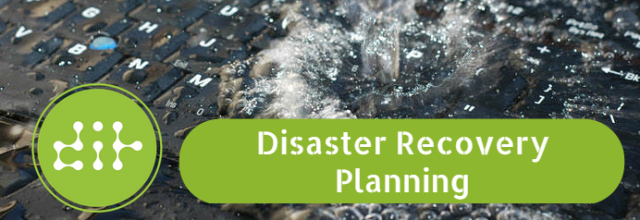Sixty percent of companies do not fully document a Disaster Recovery plan, according to the Disaster Recovery Preparedness Council’s research. Another 40% admit that the current Disaster Recovery plan in place is not actually useful when a serious emergency occurs.

What can you do to ensure your Disaster Recovery plan can face the storm? Here are some of Detroit IT’s helpful tips provided by our highly skilled team of IT Consultants.
1. Plan
- Determine what goals you want to achieve in your plan.
- Determine the most important functions that exist in your organization.
- Identify and document the specific procedures that should take place prior, during and after confirming a disaster.
- Determine the Maximum Tolerable Downtime, Recovery Point Objective and Recovery Time Objective for all IT services and applications that you utilize.
2. Develop
- Develop your strategy to recover from a worst-case scenario disaster.
- Decide what technologies that you will need to have in place to ensure a successful recovery.
- Implement the technologies and procedures planned.
- Determine and document which tasks are delegated to which member of the organization or who will serve as the main point of contact to your outsourced IT provider in the event of a disaster.
3. Test
- Test and then re-test your entire plan to confirm everything works the way you planned.
- If necessary, make the changes that need to be made.
- Your Disaster Recovery Plan should be tested 1-2 times yearly, if not quarterly.
4. Maintain
- As your organization changes and grows, so should your plan. Make sure that as you are implementing new technology or employees, they are included in your DR plan.
Short- and Long-Term Disaster Recovery Solutions
Short Term
There are simple tools that you can implement immediately to keep your technology protected during a disaster.
For example, a UPS (Un-interruptable Power Supply/Source), or a battery backup should be connected to your most critical technology.
A UPS, like a surge protector, protects from spikes in power, but also protects in dips. Power isn’t always steady—it comes in waves, with our electronics operating within a certain range. When the power dips below that range, a UPS protects the electronic device by providing backup power to cover the short loss.
Often battery backups are able to communicate with computers or servers, allowing them to safely finish their processes and then shut down. While a UPS is an ideal temporary solution, it is not a long-term power replacement option.
Long Term
Should disaster strike the physical working space where your email server and phone equipment are located, your company can suffer drastically.
For any scalable organization, moving technology to an offsite location is often an effective option. As their main purpose is to protect and store data, data centers offer a more secure location. Data Centers have the resources to provide the highest quality of security, redundant backup power sources and environmental controls to keep the servers performing at their best.
Cloud computing is also cost-efficient solution. Originally, only an option for companies with the highest revenues, the cloud has become accessible to businesses of all sizes within the past few years. The public cloud has enhanced disaster recovery using cloud computing advantages to eliminate the need for a remote location and hardware all together.
Finally, when bad weather rolls into town, traditional phone systems are also at major risk. By converting your phone system to a Voice-over-IP (VoIP) system, you’ll be weatherproofing one of the most important communication portals and saving money.
Detroit IT DR Solutions
At Detroit IT, our team of certified IT Consultants take pride in delivering top-of-the-line Disaster Recovery Solutions to our clients. If you are in need of an evaluation of your current disaster recovery plan or IT infrastructure, contact us today.

Tags: cloud computing, Disaster Recovery Posted by
